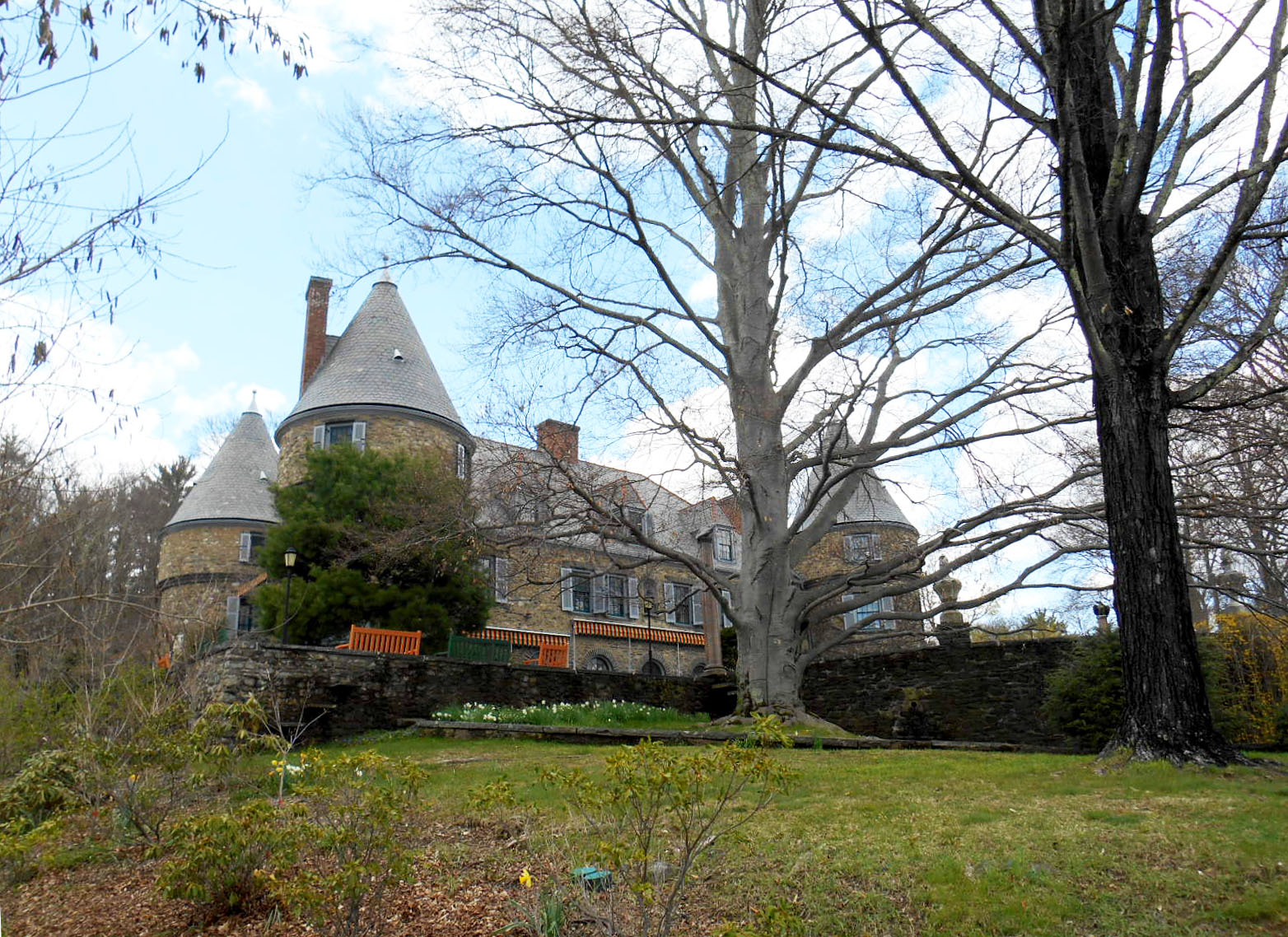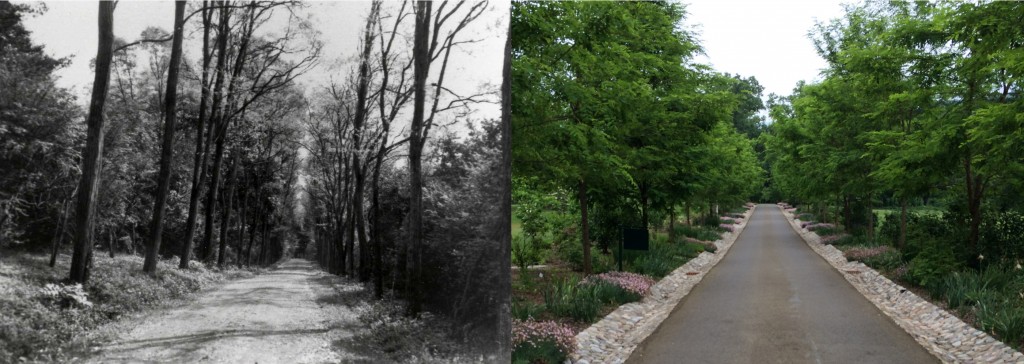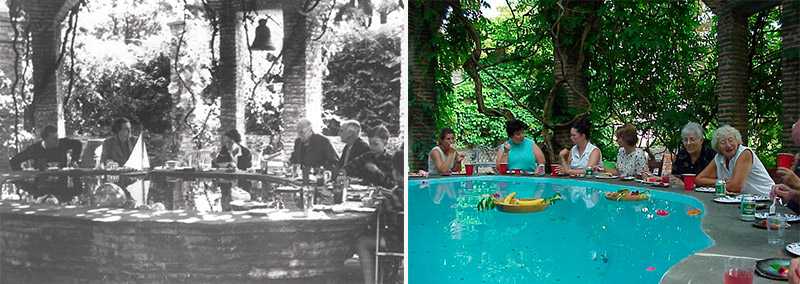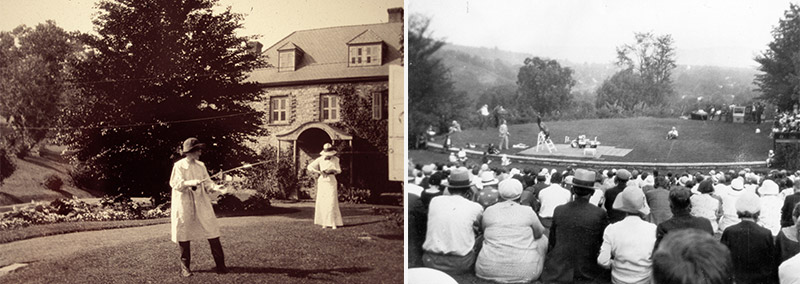
A Case Study in Preservation, Development and Evolution
The LA Group’s Site Facility Master Plan
Grey Towers was built in 1886 by James and Mary Pinchot as a summer retreat. James, Gifford’s father, in his observation of the destruction of natural resources during the 19th century, encouraged his eldest son to consider a career in forestry. Gifford Pinchot went on to become the “father of the US conservation movement” as he founded the US Forest Service and served as a two-term governor of Pennsylvania. His landscape philosophy of “preserving and positioning for future generations” remains at the core of the Grey Towers Historic Site’s mission.
“The greatest good, for the greatest number, for the long run” – Gifford Pinchot
Gifford Pinchot bequeathed his beloved home, Grey Towers, to the public hoping to establish a facility which would educate and inspire people of all ages on the natural world. Today, the site celebrates conservation and environmental stewardship and is a destination for visitors interested in learning the history and experiencing the labors of conservationists. With musical and literary events, public walks and talks, interpretive mansions tours, and conservation education and youth programs, it is one of the US Forest Service’s prominent historic sites.
A Plan for the Future
As the lead and sole consultant on the project team, The LA Group had the primary responsibility for the development of the Grey Towers National Historic Site Facilities Master Plan. Through the creation of a Facilities Master Plan, The LA Group helped the US Forest Service create a sustainable strategy to further the preservation, development and evolution of this renowned National Historic Site.
Facility and Client Goals
- Use the land while respecting its unique character, fragility, strengths and limitations
- Balance preservation with adaptation and change
- Think forward – what we need today and what future generations deserve and need tomorrow
- Recognize the landscape is not a resource to be exploited, but a resource to be cherished and appreciated
 Facility Master Plan Process
Facility Master Plan Process
Through a collaborative design and research process, The LA Group provided professional recommendations in a Facility Master Plan. The plan is a comprehensive document that catalogues historic and existing resources and conceptualizes future projects to enhance the property’s historical significance and improve the public user experience.
Assessment of uses and impact on spatial needs
While many of the current uses and needs remain consistent with historic uses, today’s visitor has particular needs not met with the existing facilities. The LA Group identified several projects to address these needs.
Respect for history
Providing for expansion and repair of facilities while celebrating their intrinsic historic value is a balancing act. The LA group categorized and evaluated areas mapped as culturally significant or potentially significant and established an opportunities and constraints matrix as a backdrop for program development.

Recognition of maintenance and operational needs
Maintaining historic facilities is often an on -going challenge due to changes in staffing and support. As part of the Facilities Master Plan, The LA Group recommended procedures, protocol and schedules.
Detailed Blueprint for Implementation
Due to the extensive volume of potential projects, the LA Group created a Priority Matrix. Use of this tool helps the US Forest Service identify the greatest needs based on low, medium and high priorities. Projects cannot be constructed without funding. As part of the Facility Master Plan, the LA Group prepared cost estimates for each proposed project. The US Forest Service now can implement a funding strategy based on both the Priority Matrix and the cost estimate information.
“The vast possibilities of our great future will become realities only if we make ourselves responsible for the future” – Gifford Pinchot

When Gifford Pinchot built his country estate at Grey Towers in the early 19th century, he was seeking to inspire, educate, entertain and offer respite to his family and guests. When he bequeathed the property to the US Forest Service, he was seeking to provide the same opportunities to the greater public. The Grey Towers Facility Master Plan will continue to aid in the further preservation, development and evolution of this renowned National Historic Site. In doing so, the Pinchot family legacy is preserved and the continued preservation of Grey Towers is ensured for future generations.


